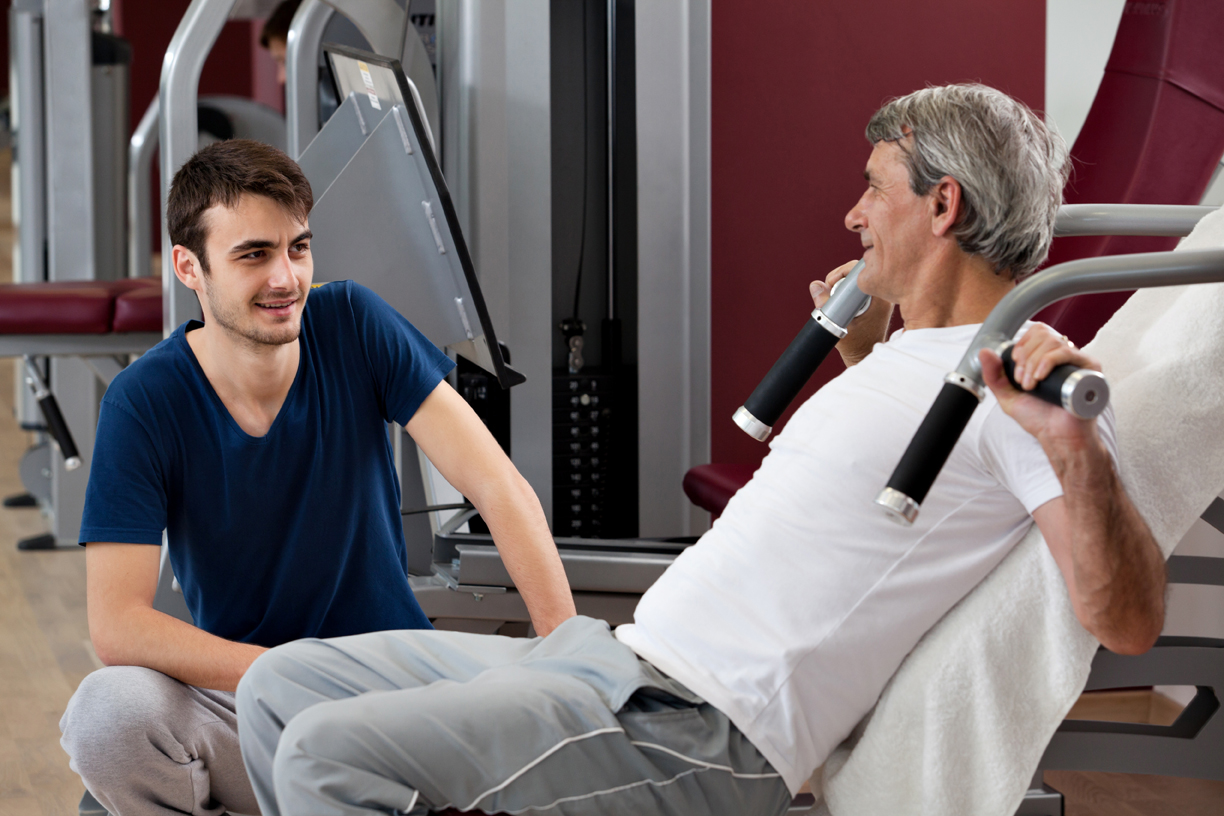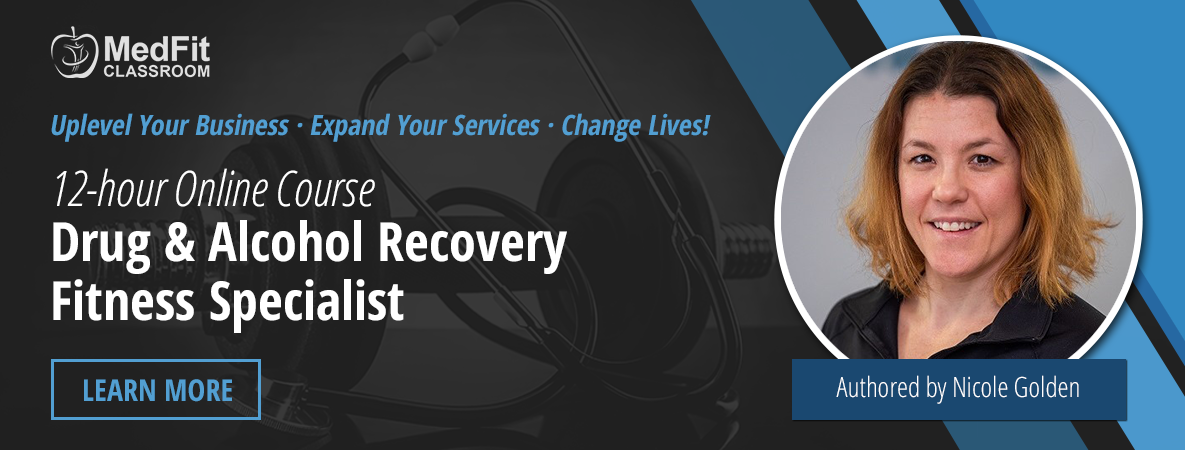Part I: Overview and Pathophysiology of Alcohol Use Disorder
Alcohol Use Disorder (AUD) may not be the first condition that comes to mind when discussing chronic conditions where exercise can provide substantial benefit. Yet, there is considerable evidence to support the idea that exercise therapy can prove quite beneficial in recovery from AUD Approximately 17.6 million Americans are diagnosed with alcohol addition or dependence each year. Likewise, AUD, like eating disorders, is a chronic condition that must always be managed as relapse occurs in 60-90% of patients (Brown et al.,2009).
Pathophysiology
Alcohol primarily triggers the release of dopamine in the brain which promotes reward-based learning thereby creating the possibility for addiction. Alcohol is also a central nervous system depressant. Likewise, it binds to glutamate receptors, specifically the N-methyl-D-aspartate receptor (NMDA). Chronic exposure to high volumes of alcohol causes the body to adapt by upregulating these receptors. However, the NMDA receptors act as stimulants which, when the individual withdraws from alcohol, can cause agitation, tremors and even tachycardia, fever and seizures when there is a large surplus of these receptors (Clapp et al., 2014).
Alcohol, consumed chronically in excess, is toxic to the liver, pancreas and bone marrow. Liver/pancreatic inflammation, anemia, dyslipidemia, protein deficiency are common findings. Similarly, many patients with alcoholism suffer from malnutrition due to chronic consumption of high volumes of alcoholic beverages instead of food in addition to interference with absorption of nutrients in the gastrointestinal tract. Malnutrition leads to both macro and micronutrient deficiencies resulting in cerebral atrophy, memory deficiency and congestive heart failure (World et al., 1985).
Recovery from Alcohol Use or Addiction Disorder
Recovery from AUD spans long after the initial withdrawal from the drug. Alcoholism is a long-term diagnosis and must be treated as a chronic condition always requiring management.
Detox/Withdrawal Process. Withdrawal from alcohol can be life-threatening if not managed appropriately. Initially, the patient is often treated with benzodiazepines (i.e., Librium, Ativan, Valium) to stimulate central nervous system depression as stimulant receptors will be greatly upregulated . Withdrawal symptoms such as tremors on the milder end to seizure, fever and tachycardia on the more severe end will typically appear within 72 hours of abstaining from alcohol. Symptoms can persist up to 2-3 weeks. During that time, benzodiazepines will be weaned until the patient is fully withdrawn. This process should occur under medical supervision. The patient can begin an exercise program after this process is complete with the clearance of a physician (Mirijello et al., 2015).
Exercise Therapy for Individuals in Recovery from Alcoholism
Exercise can be extremely therapeutic for individuals in recovery from alcoholism. Exercise therapy can assist patients in recovery from alcoholism both psychologically and physiologically by using a variety of exercise modalities. There are several aspects of the sequelae that follows initial withdrawal from alcohol where exercise proves beneficial. However, the fitness professional must pay close attention to these considerations when designing programming (Manthou et al., 2016).
In our next article, we will dive deeper into the specific considerations that the fitness professional must consider when training a client with a history of AUD both in the in-patient rehabilitation center setting as well as after discharge.
Online Course: Drug & Alcohol Recovery Fitness Specialist
Arm yourself with the knowledge & tools to build successful fitness programming for drug and alcohol recovery.
Substance Use Disorder affects a huge number of individuals. More than 20 million Americans are diagnosed with Substance Abuse Disorder. Research has demonstrated that exercise therapy can help these patients a great deal from improving long-term neurological outcomes to relapse prevention. There are physiological and psychological considerations you must understand to design and implement successful exercise programs for this population.
MedFit Classroom’s online course, Drug and Alcohol Recovery Fitness Specialist, will teach you what you need to know.
Nicole Golden is a NASM Master Trainer, CES, BCS, FNS and AFAA certified group fitness instructor and graduate student at Concordia University Chicago where she is earning her Master of Science in Applied Exercise Science/Sports Nutrition. She has been a health/fitness professional since 2014 when she left the field of education to pursue a full-time career in fitness. Nicole is the owner of FWF Wellness where she specializes in corrective exercise, weight loss coaching, nutrition coaching and group fitness.
References
- Brown, R. A., Abrantes, A. M., Minami, H., Read, J. P., Marcus, B. H., Jakicic, J. M., Strong, D. R., Dubreuil, M. E., Gordon, A. A., Ramsey, S. E., Kahler, C. W., & Stuart, G. L. (2014). A preliminary, randomized trial of aerobic exercise for alcohol dependence. Journal of Substance Abuse Treatment, 47(1), 1–9. https://doi.org/10.1016/j.jsat.2014.02.004
- Brown, R. A., Abrantes, A. M., Read, J. P., Marcus, B. H., Jakicic, J., Strong, D. R., Oakley, J. R., Ramsey, S. E., Kahler, C. W., Stuart, G. G., Dubreuil, M. E., & Gordon, A. A. (2009). Aerobic exercise for alcohol recovery: Rationale, program description, and preliminary findings. Behavior Modification, 33(2), 220–249. https://doi.org/10.1177/0145445508329112
- Clapp, P., Wackernah, R., & Minnick, M. (2014). Alcohol use disorder: Pathophysiology, effects, and pharmacologic options for treatment. Substance Abuse and Rehabilitation, 5, 1. https://doi.org/10.2147/sar.s37907
- Manthough, E., Geogakouli, K., Fatouros, I. G., Gianoulakis, C., Theodorakis, Y., & Jamurtas, A. Z. (2016). Role of exercise in the treatment of alcohol use disorders. Biomedical Reports, 4(5), 535–545. https://doi.org/10.3892/br.2016.626
- Mayo Clinic. (2018). Alcohol use disorder – Diagnosis and treatment – Mayo Clinic. Mayoclinic.Org. https://www.mayoclinic.org/diseases-conditions/alcohol-use-disorder/diagnosis-treatment/drc-20369250
- Mirijello, A., D’Angelo, C., Ferrulli, A., Vassallo, G., Antonelli, M., Caputo, F., Leggio, L., Gasbarrini, A., & Addolorato, G. (2015). Identification and management of alcohol withdrawal syndrome. Drugs, 75(4), 353–365. https://doi.org/10.1007/s40265-015-0358-1
- World, M. J., Ryle, P. R., & Thomson, A. D. (1985). Alcoholic malnutrition and the small intestine. Alcohol and Alcoholism (Oxford, Oxfordshire), 20(2), 89–124. https://www.ncbi.nlm.nih.gov/pubmed/4052163


